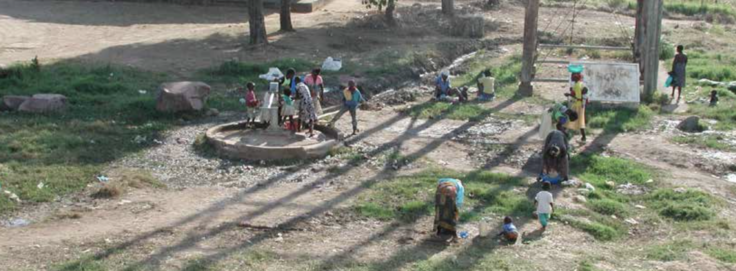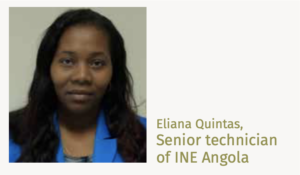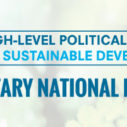
Search
‘The M-MPI is an Important Tool for Guiding Public Policy’

Why did Angola decide to measure multidimensional poverty at a municipal level?
We hadn’t initially planned on measuring multidimensional poverty in Angola at a municipal level. The main objective was to calculate a national Multidimensional Poverty Index, considered the official measurement of multidimensional poverty in the country, with data from the 2015-2016 IIMS Multiple Indicator and Health Survey, which resulted from the combination of the 4th Multiple Indicator Survey (MICS IV) and the 1st Demographic and Health Survey (DHS I).
Due to the need of the Ministries of Finance and Ministry of Territory Administration and State Reform (MAT in Portuguese) to identify the level of poverty of each municipality and group them into technically sound and useful classifications for the distribution of the public budget (OGE in Portuguese), we contacted the National Institute of Statistics (INE) so that we could also calculate poverty on a municipal level. For this reason, a proxy MPI, called the Municipal Multi- dimensional Poverty Index (M-MPI), was developed for all municipalities.
What was the initial process like? What stakeholders were involved?
The first step consisted of holding several technical meetings and a public consultation with various sectors of civil society. Then we moved on to identifying the General Population and Housing Census (RGPH), which was carried out in 2014, as the data source, be- cause it is the only source that allows for a classification of the 164 municipalities in the country. At the time the census was taken, the country only had 162 municipalities, but two years later the Political and Administrative Division of the country was updated, bringing the total to 164 municipalities for which the MPI had to be calculated.
Throughout the process, INE had the support of OPHI, the UNDP, and the Ministries of Finance and Territory Administration.
‘The M-MPI was primarily calculated with the aim of classifying municipalities according to their level of multidimensional poverty.’

How were dimensions and indicators selected?
At first we looked at the dimensions and indicators of the global MPI, then we considered which would be relevant for the country and possible to calculate with the data from the 2014 census. Finally, a public consultation was carried out in March 2019, which, among other things, led to the collection of contributions from society to establish the dimensions and indicators relevant to the composition of the national MPI. For this reason, we incorporated the dimension of employment, for example, as well as indicators concern- ing water and sanitation in the dimension of health.
Thus, Angola used four dimensions and 11 indicators to measure municipal poverty to provide us with a more accurate image of poverty at a municipal level. For example, one indicator in the dimension of employment is ‘dependency’, in which a household is considered as deprived if for every five members of the family unit there is not at least one member between the ages of 15 and 64 (working age) who works. This indicator is important because it allows us to understand the vulnerability of the whole household to the negative changes that can result from the loss of work of members who support the household financially.
How are local authorities in Angola going to use this MPI for policy?
The M-MPI was primarily calculated with the aim of classifying municipalities according to their level of multidimensional poverty, in order to prioritise the poorest municipalities in the allocation of resources.
Angola has a clear commitment to the reduction of poverty in the country, which is reflected in the National Development Plan (NDP) 2018–2022, in Presidential Decree No.163/19, and in Angola’s explicit efforts to fulfil the SDGs and comply with the 2030 Agenda. In this context, the creation of the M-MPI is an important tool for guiding public policy, because it provides the Angolan government with an instrument that clearly indicates which municipalities actually need more resources for dealing with poverty.
This article was published in Dimensions 9
















